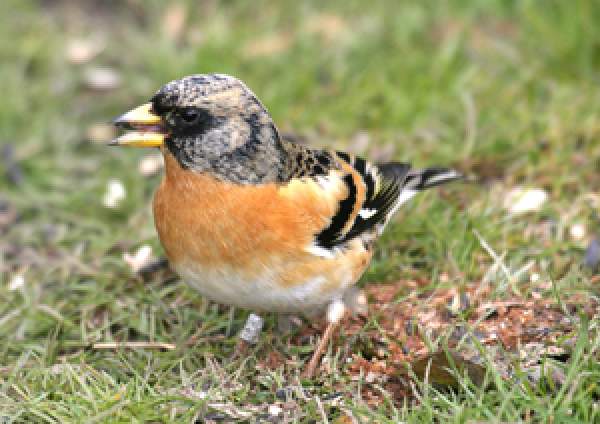Brambling
Fringilla montifringilla

Although similar in size and shape, the Brambling can be instantly distinguished from the Chaffinch by its white rump, orange-buff colouration, flecked flanks and lack of white on the outer tail feathers. Male Bramblings are more strongly marked than both females and immatures. Confusion with Chaffinch may occur if the bird is not seen well, when the wing pattern can be suggestive of Chaffinch. Both the flight call, and the sound of a roosting flock, are distinctive.
Bramblings are migrants, wintering south of the breeding range and in varying numbers depending upon the availability of beech mast. It is only really in poor mast years, with bad winter weather, that any number can be seen feeding in British gardens.
Most of those reaching Britain come from Fennoscandia, arriving via the Continent to avoid crossing the large expanse of the North Sea. While Chaffinches will exploit beech mast if it occurs locally, Bramblings very clearly move to find beech mast.
Find out more about Bramblings on BirdFacts and the Wider Countryside Report.






Share this page